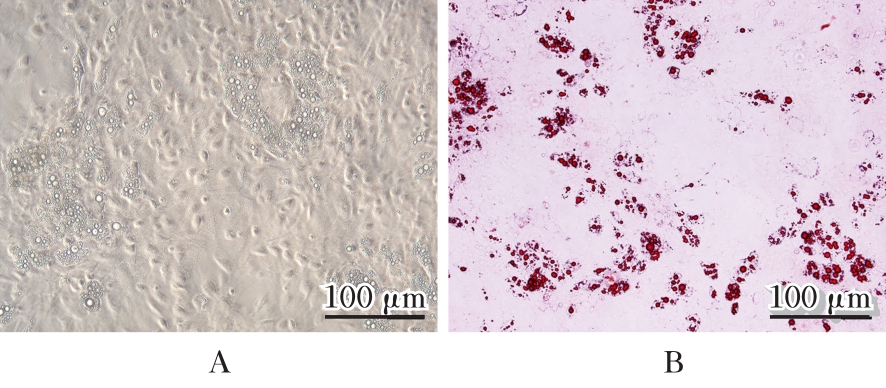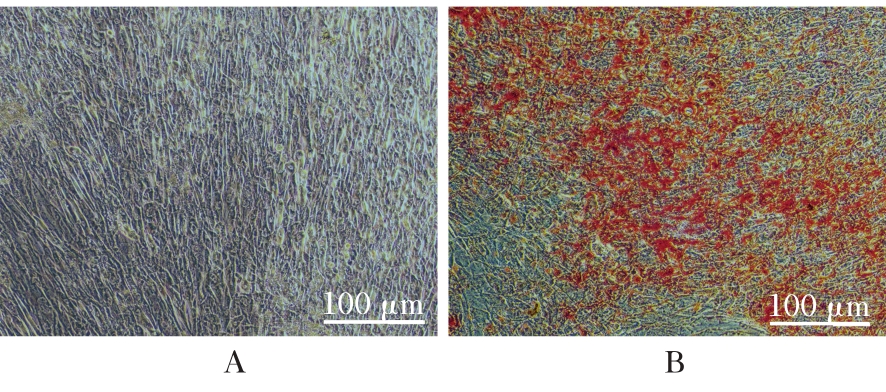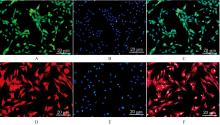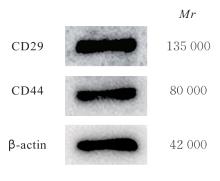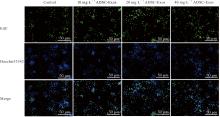吉林大学学报(医学版) ›› 2024, Vol. 50 ›› Issue (3): 718-727.doi: 10.13481/j.1671-587X.20240316
• 基础研究 • 上一篇
脂肪干细胞源性外泌体对体外巨噬细胞迁移能力的影响
袁博1,2,3,谢佳忆4,江思瑜1,5,孟亚军1,朱清华1,李晓飞1,付秀美1,3( ),谢利德1(
),谢利德1( )
)
- 1.承德医学院基础医学院人体解剖学教研室,河北 承德 067000
2.承德护理职业学院病原生物与免疫教研室,河北 承德 067000
3.河北省神经损伤与修复重点实验室,河北 承德 067000
4.清华大学信息科学技术学院自动化系,北京 100062
5.河北医科大学第一医院中心实验室,河北 石家庄 050000
Effect of adipose-derived stem cell-derived exosomes on migration ability of macrophages in vitro
Bo YUAN1,2,3,Jiayi XIE4,Siyu JIANG1,5,Yajun MENG1,Qinghua ZHU1,Xiaofei LI1,Xiumei FU1,3( ),Lide XIE1(
),Lide XIE1( )
)
- 1.Department of Human Anatomy,School of Basic Medical Sciences,Chengde Medical University,Chengde 067000,China
2.Department of Pathogens and Immunology,Chengde Nursing Vocational College,Chengde 067000,China
3.Key Laboratory of Nerve Injury and Repair of Hebei Province,Chengde 067000,China
4.Department of Automation,School of Information Science and Technology,Tsinghua University,Beijing 100062,China
5.Central Laboratory,First Hospital,Hebei Medical University,Shijiazhuang 050000,China
摘要:
目的 探讨脂肪干细胞源性外泌体(ADSC-Exos)对巨噬细胞 RAW264.7 迁移能力的影响,阐明其促进巨噬细胞功能的作用。 方法 分离SD大鼠附睾旁脂肪组织,进行脂肪源性干细胞(ADSCs)原代培养,通过成脂和成骨分化诱导,结合油红O和茜素红染色检测ADSCs的多向分化潜能。采用Western blotting法和免疫荧光法检测ADSCs标记物CD29及CD44阳性表达情况,采用外泌体(Exos)分离试剂盒提取ADSC-Exos,透射电子显微镜和纳米颗粒跟踪分析仪检测ADSC-Exos的形态大小和粒径分布范围,Western blotting法检测Exos特异性标记物CD9和TSG101蛋白表达情况,示踪法观察巨噬细胞摄取ADSC-Exos情况。将巨噬细胞RAW264.7分为对照组、10 mg·L-1 ADSC-Exos组、20 mg·L-1 ADSC-Exos组和40 mg·L-1 ADSC-Exos组。5-乙基-2'-脱氧尿苷(EdU)染色检测各组巨噬细胞活性,Transwell小室实验检测各组巨噬细胞迁移细胞数,荧光显微镜观察各组巨噬细胞黏附情况。 结果 原代ADSCs培养24 h后细胞贴壁生长,呈散在、长梭形;培养7 d,贴壁细胞呈齿梳状、旋涡状有序排列,呈成纤维细胞样外观;培养10代后ADSCs形态不规则,增殖速度减慢。分离提取的ADSCs具有成骨和成脂分化潜能,CD29和CD44蛋白表达阳性。透射电子显微镜下ADSC-Exos呈茶碟状,ADSC-Exos的粒径主峰分布于132 nm附近,ADSC-Exos中CD9和TSG101蛋白表达阳性,即ADSC-Exos提取成功。荧光显微镜下RAW264.7细胞核周围可检测到红色荧光信号,即ADSC-Exos可以被巨噬细胞摄取。与对照组比较,10、20和40 mg·L-1 ADSC-Exos组EdU阳性细胞率均明显升高(P<0.05);与10 mg·L-1 ADSC-Exos组比较,20 mg·L-1 ADSC-Exos组EdU阳性细胞率均明显升高(P<0.05)。与对照组比较,10、20和40 mg·L-1 ADSC-Exos组巨噬细胞迁移细胞数均明显增加(P<0.05);与10 mg·L-1 ADSC-Exos组比较,20和40 mg·L-1 ADSC-Exos组巨噬细胞迁移细胞数均明显增加(P<0.05)。与对照组比较,10、20和40 mg·L-1 ADSC-Exos组巨噬细胞黏附细胞数均明显增加(P<0.05);与10 mg·L-1 ADSC-Exos组比较,20 mg·L-1 ADSC-Exos组巨噬细胞黏附细胞数明显增加(P<0.05)。 结论 ADSC-Exos可被巨噬细胞摄取,其通过影响细胞黏附提高巨噬细胞的迁移能力。
中图分类号:
- Q25



